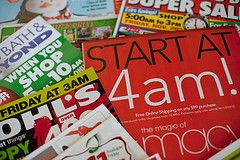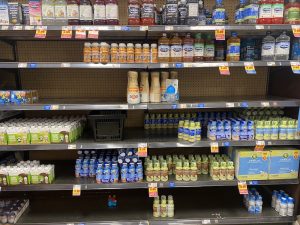Retail is as rife with jargon as any other business beat. If you want a formal definition of any of these terms or others, Investopedia is a great resource. But this is my attempt at breaking down some of the most common retail lingo.
Assortment: The mix of products in a store.
Basket size: Can refer to either the number of items each customer purchases or the total value of those items.
Black Friday: Refers to the day after Thanksgiving, the traditional kickoff to the holiday shopping season.
Supposedly, this marked the moment when many retailers began turning a profit, or moved from the red into the black. This may or may not be the biggest shopping day of the year, depending on who is measuring. I generally view this as the day with the highest number of shoppers.
Customer-centricity: A popular trend in which stores and products are designed around segments of customers grouped according to behavioral and demographic characteristics
Customer-loyalty program: A tool retailers use to track each customers’ purchases. This helps them tailor their assortment of products and can make their supply chain more efficient. Retailers often encourage shoppers to sign up for the program by promising discounts or bonuses for members. Think Sephora Beauty Insider, Harris Teeter’s VIC program or even Target’s RedCard.
Cyber Monday: Refers to the Monday after Thanksgiving when shoppers go back to work and start making purchases online. The term was coined by the National Retail Federation and many stores have built promotions around the day. It is typically not the busiest online shopping day of the year.
End cap: The display at the end of an aisle. It is considered prime retailing space.E-fencing: Selling stolen goods over the Internet, a tactic often employed in organized retail crime
Inventory: The amount of merchandise in the store.
Loss prevention: Fancy term for security, or stopping theft from both employees and shoplifters.
Organized retail crime: The name is pretty self-explanatory, but it’s become a hot topic in retail. Organized retail crime goes beyond the teenager shoplifting bubblegum. It refers to systemic efforts by multiple people to defraud retailers – from creating fake receipts for returns to taking merchandise to issuing fraudulent gift cards. Retailers estimate ORC costs them billions of dollars annually. | Retail gangs: A new breed of thieves
Point of sale (POS): Essentially, the cash register.
Price point: Same as price. You may hear retailers refer to “opening price points,” the price of the cheapest item them sell in a category. Retailers typically think of their prices and merchandise in terms of “good, better and best.” Good is the cheapest and most basic product; best is the most expensive and elaborate.
Sale vs. discount: In normal life, we use these terms interchangeably, but retailers must distinguish between them since everything in a store is technically on sale. Use “discount” when the price of merchandise has been reduced. Retailers also call these products “markdowns.” Most retailers plan markdowns in advance to ensure that they can sell all of their merchandise. However, when products aren’t selling well, they may have to resort to unplanned discounting to get rid of their inventory – and that’s where they can get into trouble.
Sales per square foot: A common measure of a store’s performance
Same-store or comparable-store sales: Sales at stores open at least a year compared to sales for the same time period during the previous year. (Ex: July 2011 vs. July 2010) Some retailers include online sales in this calculation.

SKU stands for Stock Keeping Unit: This refers to the code used to identify each type of product in a store. (Ex: All of the Honey Nut Cheerios will have one SKU, while the Multigrain Cheerios will have a different SKU.) The number of SKUs in a store can give you an idea of the diversity of products its carries.
Shrinkage: The amount of merchandise lost to theft or damage.
Super Saturday: Refers to the Saturday before Christmas, and another contender for the biggest shopping day of the year. I generally view this as the day with the highest amount of sales as shoppers scramble to cross all the names off their Christmas lists.
Supply chain: The long, complicated route that merchandise travels from manufacturer to store shelf. Reverse supply chain refers to the movement of returned and damaged merchandise out of the store to another location.
Year-over-year/Month-to-month: Year-over-year compares data for a specific time period in one year to the same time period in previous years. (Ex: first quarter 2011 vs. first quarter 2010) Month-to-month compares data in consecutive time periods. (Ex: second quarter 2011 vs. first quarter 2010) In each case, the most recent time period is usually stated first.










